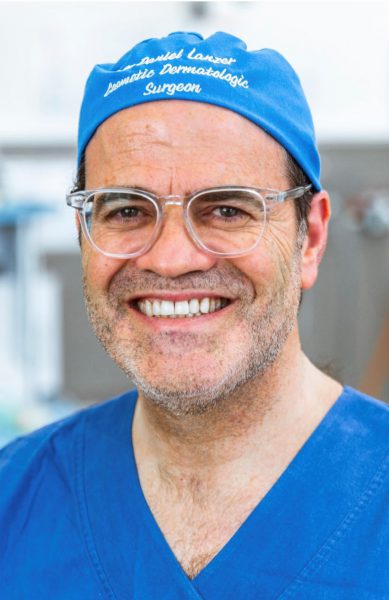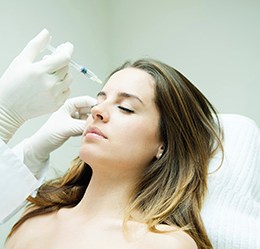It’s no secret that controversial content sparks the most interest online, but when it comes to the medical field, where’s the line between unethical and entertaining?
A Brazilian Plastic Surgeon has made headlines after her controversial TikTok content has led to a 6-month suspension of her medical license as decided by the The Regional Medical Board of the State of Sao Paulo (CREMESP). It follows the decision by the board of the Brazilian Society of Plastic Surgery (SBCP) to remove Caren Trisoglio Garcia, known on TikTok as @minhacirurgiaoficial, due to internal complaints about her surgery-related content.
The content in question, which has since been removed from her platform, shows Dr Garcia dancing and smiling while holding pieces of human flesh that have been removed post-surgery. The captions refer to them as ‘the breast’ and ‘the under-arm fat’, with another captioned ‘today’s trophy’.
Considering these platforms have their own ‘opt-in’ process in the form of the follow button, and no patient’s privacy was ever compromised, should Dr Garcia’s content be considered entertaining, educational or simply unethical?

Dr Daniel Lanzer is one of Australia’s most successful TikTokers from the cosmetic medicine field boasting a following of more than 4million users. His content has been liked almost 60 million times and some of his videos showing a behind-the-scenes of his many surgeries have almost 100 million views.
We asked him about his social media use and whether there are ethical boundaries that content creators in the medical field shouldn’t cross.
“TikTok is a fun way of engaging with the public through short glimpses of video with music. We find it very educational and it’s fantastic that we can connect with people all over the world,” says Dr Lanzer.
“Our passion for good results comes through in our content and the public likes to see real people with real results.”
“There are [ethical boundaries]. Tiktok is no different to any other form of advertising,” advises Dr Lanzer. “It must not trivialise surgery or give a false and misleading impression about surgery. Our account warns about risks and shows true honest results.”
As for the guidance offered as to what is and isn’t appropriate, Dr Lanzer says that TikTok offers some guidance, but that doctors mainly answer to medical boards.
“The main guidance is no nudity but doctors are guided by very good medical board standards.”
A spokesperson for the Australian Health Practitioner Regulation Agency (Ahpra) weighed in with what Australia’s guidelines for the ethical use of social media actually are.
“The National Boards and Ahpra have published guidance to help registered health practitioners understand and meet their obligations when using social media.
“The National Law, a National Board’s code of ethics and professional conduct (the Code of conduct) and the Guidelines for advertising regulated health services (the advertising guidelines) also apply.”
According to Ahpra, a practitioner using social media can meet their obligations by:
- complying with confidentiality and privacy obligations
- complying with their professional obligations as defined in their Board’s Code of conduct (for medical practitioners this is the Medical Board of Australia’s Good medical practice: a code of conduct for doctors in Australia)
- maintaining professional boundaries
- communicating professionally and respectfully with or about patients, colleagues and employers, and
- not presenting information that is false, misleading or deceptive, including advertising only claims that are supported by acceptable evidence.


In addition, the advertising guidelines were developed to help advertisers understand their obligations when they are advertising a regulated health service.
Section 133 of the National Law states that a person must not advertise a regulated health service, or a business that provides a regulated health service, in a way that:
- is false, misleading or deceptive or is likely to be misleading or deceptive
- offers a gift, discount or other inducement to attract a person to use the service or business, unless the advertisement also states the terms and conditions of the offer
- uses testimonials or purported testimonials about the service or business
- creates an unreasonable expectation of beneficial treatment, or
- directly or indirectly encourages the indiscriminate or unnecessary use of regulated health services.
“The advertising rules are not intended to stop people using social media, but all advertisers must be aware that if they are using social media to advertise, they need to meet the advertising requirements in the National Law,” says Ahpra.
“This includes a practitioner not sharing or re-tweeting any comments about a clinical aspect of a regulated health service they provide which have been made by a person on a third-party website. Sharing or retweeting the comment could be considered advertising as it may promote a regulated health service.”
While the guidelines lack specificity around social media platforms like TikTok and Instagram, it goes without saying that doing what’s in the best interest of your patients and the wider public will always be the safest move when creating content.
DID YOU KNOW
There are 5 ways you can catch up with SPA+CLINIC?
- Our quarterly print magazine, delivered to your door. Subscribe here.
- Our website, which is updated daily with its own completely unique content and breaking news.
- Our weekly newsletter – free to your inbox! Subscribe here.
- Our digital magazine – click here to view previous issues.
- Our social media – see daily updates on our Instagram, Facebook & Linkedin





